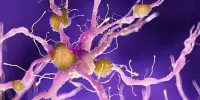In 2018, a group of researchers aiming to study the usage of sulfide solutions to minimize mercury emissions from alumina refineries uncovered another, more significant discovery: an ion originally thought to be a crucial part of chemical calculations no longer exists.
While looking into the usage of sulfide solutions to reduce mercury emissions, the team became interested in the S2- ion. While it exists in a variety of forms, it was previously considered that it exists as an aqueous solution with water acting as the dissolving ingredient.
It was presumed for decades that it existed in this form, S2-(aq). However, the team employed a Raman spectrometer, which employs scattered light to analyze the vibrational energy modes of samples, and discovered, to everyone’s surprise, that no S2-(aq) was detected despite their best efforts.

“A simple chemical problem that defies the best that modern instrumentation can provide is rare nowadays,” stated the scientists in their report. “A widespread, continuous scientific misadventure is extremely rarer. However, both occurred as a result of the hypothesized existence of the chemical species S2-(aq).”
According to the team, who claimed that the ion (in aqueous form) should be “completely banned by the chemical community,” the error occurred decades ago and has remained a part of chemistry research calculations ever since.
“It means that some simple chemistry calculations, which are often used to predict how sulfide minerals dissolve and react in water, are incorrect,” co-author Dr. Darren Rowland remarked at the time. “Our recommendation to researchers and teachers is to not accept the existence of sulfide ion in aqueous solution, as there is no evidence for its existence.”
“We hope our results now take a firm hold in chemical calculations,” he went on to say, “but time will tell.”














